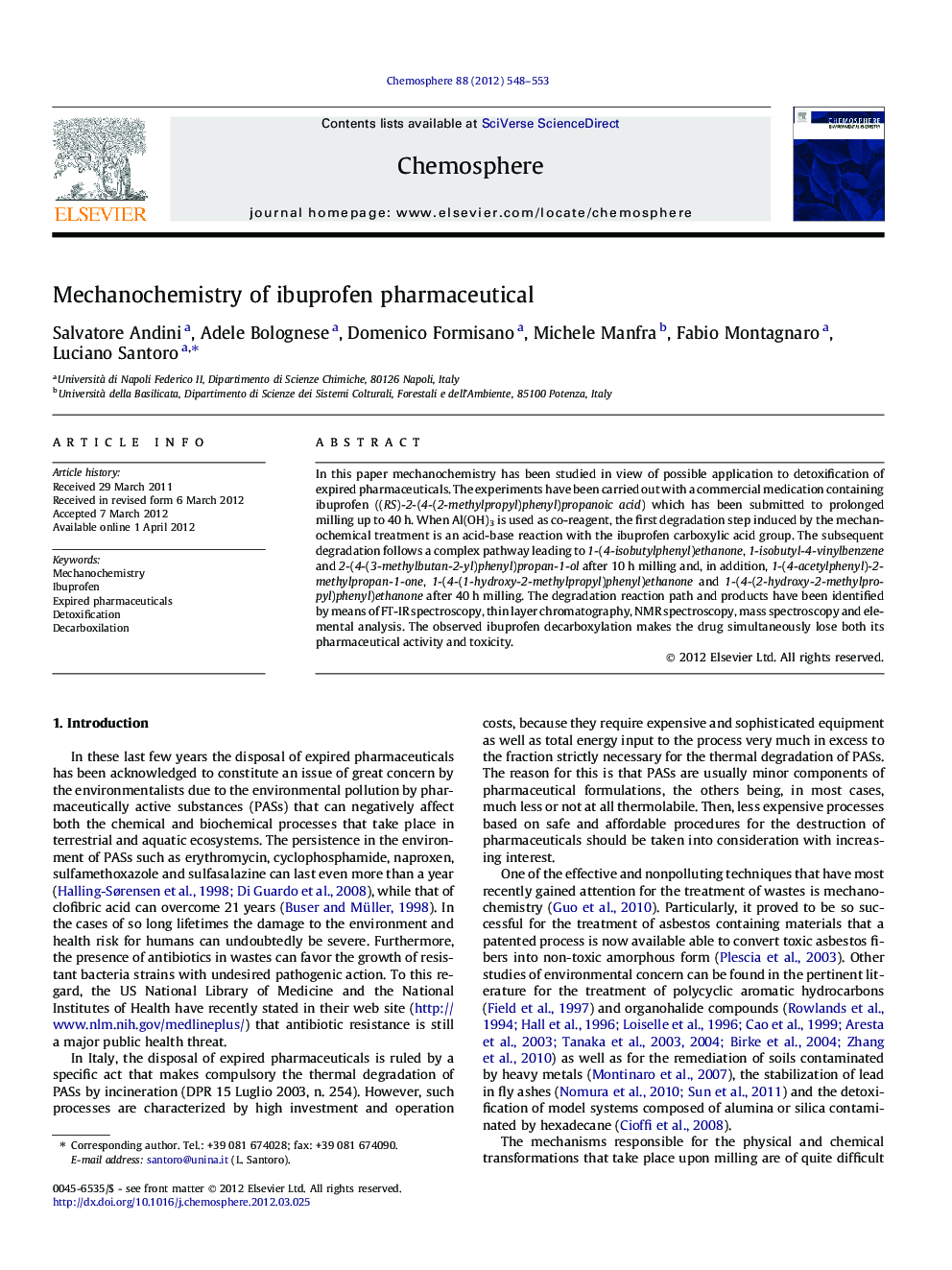| Article ID | Journal | Published Year | Pages | File Type |
|---|---|---|---|---|
| 4410300 | Chemosphere | 2012 | 6 Pages |
In this paper mechanochemistry has been studied in view of possible application to detoxification of expired pharmaceuticals. The experiments have been carried out with a commercial medication containing ibuprofen ((RS)-2-(4-(2-methylpropyl)phenyl)propanoic acid) which has been submitted to prolonged milling up to 40 h. When Al(OH)3 is used as co-reagent, the first degradation step induced by the mechanochemical treatment is an acid-base reaction with the ibuprofen carboxylic acid group. The subsequent degradation follows a complex pathway leading to 1-(4-isobutylphenyl)ethanone, 1-isobutyl-4-vinylbenzene and 2-(4-(3-methylbutan-2-yl)phenyl)propan-1-ol after 10 h milling and, in addition, 1-(4-acetylphenyl)-2-methylpropan-1-one, 1-(4-(1-hydroxy-2-methylpropyl)phenyl)ethanone and 1-(4-(2-hydroxy-2-methylpropyl)phenyl)ethanone after 40 h milling. The degradation reaction path and products have been identified by means of FT-IR spectroscopy, thin layer chromatography, NMR spectroscopy, mass spectroscopy and elemental analysis. The observed ibuprofen decarboxylation makes the drug simultaneously lose both its pharmaceutical activity and toxicity.
► Mechanochemical treatment of ibuprofen with Al(OH)3 leads to drug degradation. ► The reaction path starts with the acid-base reaction between –COOH group and Al(OH)3. ► A complex pathway follows that ultimately leads to ibuprofen decarboxylation. ► The drug simultaneously lose both its pharmaceutical activity and toxicity.
